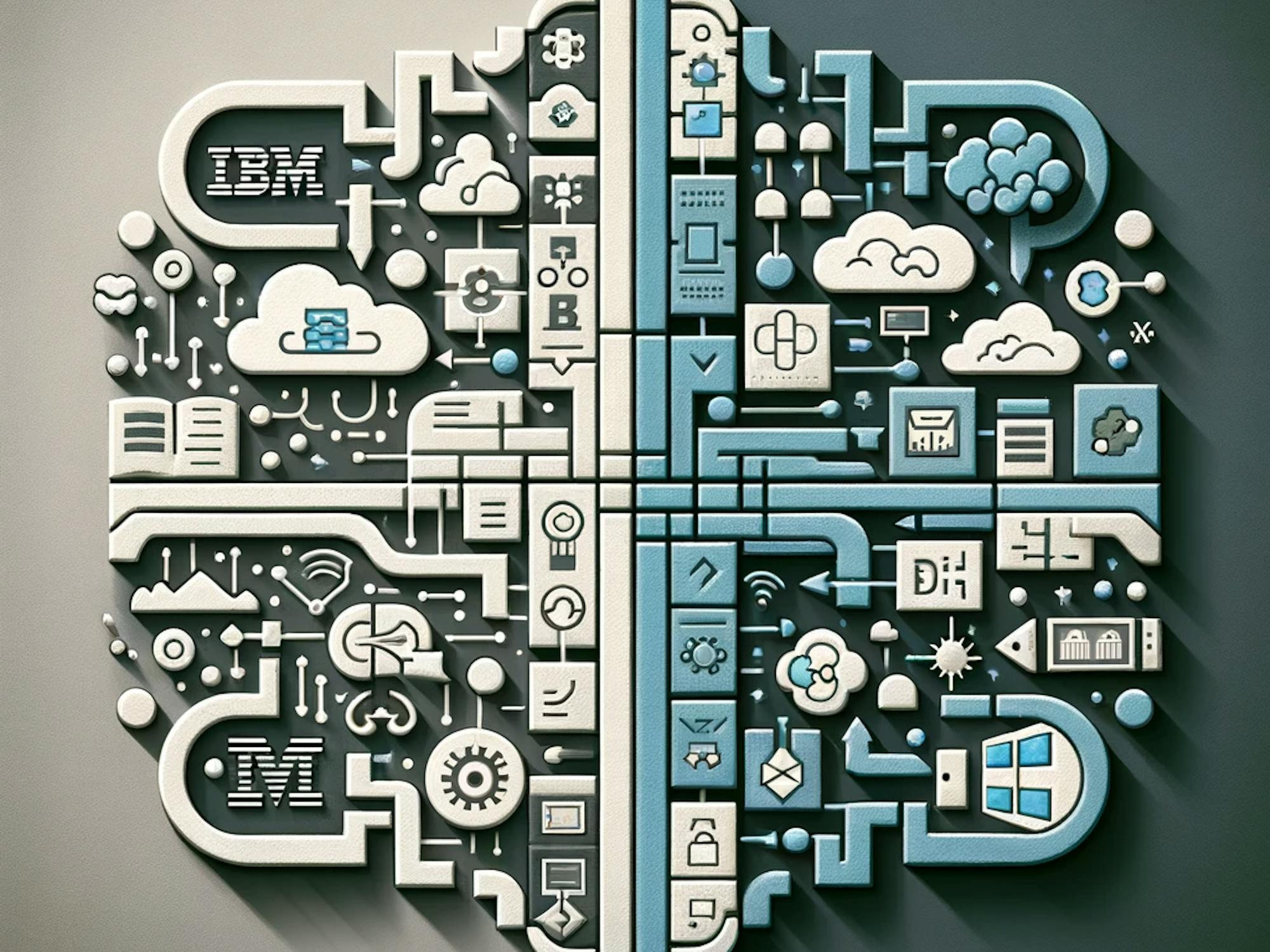IBM Cloud Pak for Integration vs. Microsoft Integration Offerings
Dec 3, 2023

In the dynamic world of enterprise integration and application development, IBM Cloud Pak for Integration (CP4I) and Microsoft's suite of integration and application services stand out. This article delves deeper into their offerings, providing a detailed comparison to help organizations make informed decisions.
IBM Cloud Pak for Integration (CP4I) Products
IBM's CP4I is designed for complex enterprise environments, offering a robust set of tools for integration tasks:
- App Connect: Automates data synchronization between apps, enabling rapid deployment of integration solutions with a low-code approach.
- API Connect: Provides a full lifecycle API management solution that supports the creation, running, managing, and securing of APIs.
- MQ: Delivers reliable, secure messaging across diverse environments, ensuring data integrity and reducing system maintenance.
- DataPower Gateway: Acts as a secure gateway for data and application services, providing security, control, integration, and optimized access.
- Event Streams: Based on Apache Kafka, it's designed for high-throughput, scalable messaging and streaming analytics.
- Aspera: Offers high-speed data transfer, particularly useful for large-scale migrations and syncs.
- Integration Insights: Monitors and tracks business transactions across multiple integration points, offering deep insights into data flow and performance.
Microsoft Integration and Application Offerings
Microsoft's suite, mainly through Azure, provides versatile tools for integration and app development:
- Azure Logic Apps: Allows users to design workflows that connect apps, data, services, and systems with a user-friendly visual designer.
- Azure API Management: Manages APIs through their entire lifecycle, with features for securing, observing, and analyzing API traffic.
- Azure Service Bus: A reliable cloud messaging service for connecting apps and devices across public and private clouds.
- Azure Event Hubs: A large-scale data streaming platform and event ingestion service, capable of receiving and processing millions of events per second.
- Azure Data Factory: Integrates and transforms disparate data sources, facilitating data-driven workflows for analytics and data movement.
- Power Automate: Offers workflow automation across various apps and services, enhancing productivity with minimal code.
- Power Apps: Enables quick app development, allowing users to build custom apps with low-code techniques.
Comparative Analysis
- Integration Scope: IBM CP4I is heavily focused on complex, enterprise-grade integrations, offering robustness and reliability, particularly in hybrid cloud or multi-cloud environments. Microsoft's offerings are more varied, catering to a broader range of integration scenarios, including cloud-native solutions.
- User Experience: Microsoft's tools, especially Power Apps and Power Automate, are known for their ease of use, appealing to a broader audience including those with minimal technical background. IBM’s tools, while powerful, generally require more technical expertise.
- Performance and Reliability: IBM MQ is renowned for its high performance in critical applications, ensuring message integrity and reliability. Microsoft Azure Service Bus also offers reliable messaging but is more aligned with cloud-centric applications.
- API Management: Both IBM API Connect and Azure API Management provide comprehensive tools for managing the lifecycle of APIs, but IBM’s solution is often preferred in complex, enterprise-level environments.
- Event Handling and Streaming: IBM’s Event Streams and Microsoft’s Azure Event Hubs are both powerful for handling high-volume data streams, but IBM's Kafka-based solution is often seen as more robust for enterprise-level event processing.
- Data Transfer and Integration: IBM Aspera is specialized for high-speed, large-volume data transfers, making it ideal for enterprises with heavy data migration needs. Azure Data Factory, while powerful in data integration, focuses more on ETL (Extract, Transform, Load) processes and interconnectivity between various data sources.
Conclusion
The decision between IBM CP4I and Microsoft's offerings hinges on specific organizational needs. IBM CP4I is ideally suited for enterprises that require robust, secure, and scalable integration solutions, particularly in complex environments. Microsoft’s suite, with its cloud-centric, user-friendly tools, is more suited for organizations that prioritize versatility, ease of use, and rapid application development. This comparison underscores the importance of aligning the choice of integration and application development tools with an organization's infrastructure, technical capabilities, and strategic objectives.